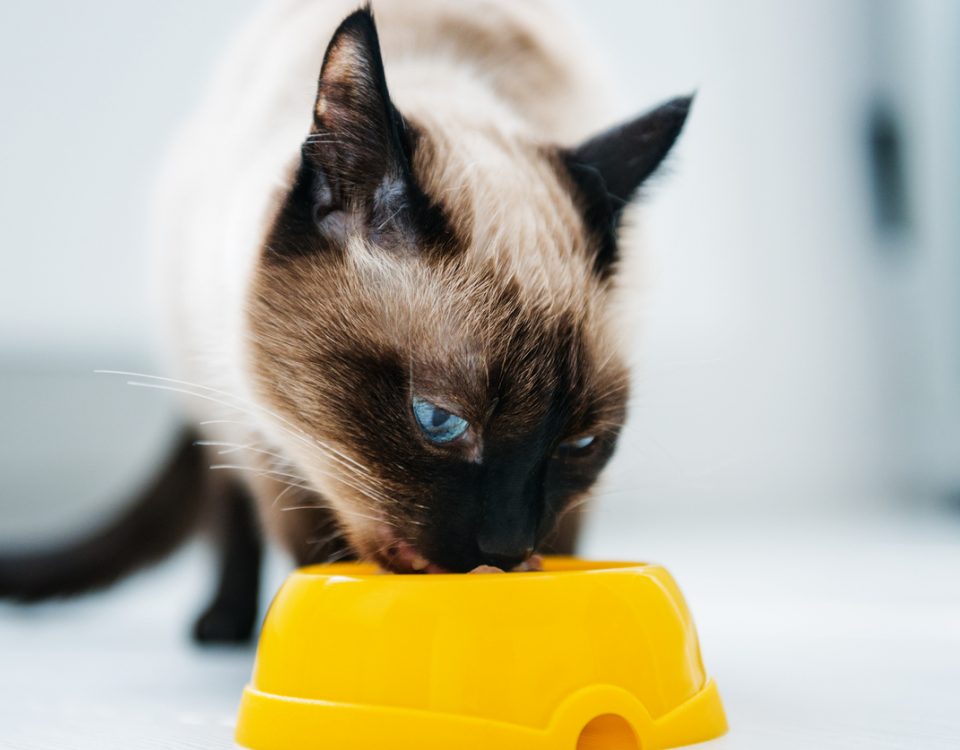- Call today!
- 845-706-7885
Q. My cat turned out to be allergic to her food, and my veterinarian told me to switch her to a special diet. But no matter what I do, she won't eat it. I let her go hungry but still nothing. What next?
A. First, never let a cat go without eating for more than a single meal: It can kill them. Cats are susceptible to a condition known as hepatic lipidosis, or fatty liver disease. We don't really know exactly how or why they suffer so much from not eating, or whether there has to be some other cause along with the lack of food that sets off this liver disease. But we do know that affected cats are very sick, and may well die without expensive and difficult treatment.
So what can you do when your cat has to have a change of diet, but has no intention of cooperating?
Help Your Cat Make the Switch
First, realize your cat isn't just being finicky. Cats in the wild are known to "imprint" on specific shapes, flavors, smells and textures, and they learn at a young age that only those things are "food." This helps them learn to avoid foods that might be poisonous.
The same thing happens when we raise kittens and young cats to eat the exact same food every meal. Your cat honestly may not think the new food you're offering her is edible at all. To her, it's like you're giving her rocks — and unlike Labrador Retrievers, cats aren't into eating rocks. That's why it's a good idea to give new kittens several different kinds of food — dry, canned, and different varieties and brands — so they understand there is a range. If it's too late for that, it's going to take some careful planning to get your cat switched to her new diet.
For those lucky owners of only slightly resistant cats, you probably won't need to do anything but offer the new food. If that's not enough, try warming it in the microwave and, if necessary, adding a little bit of tuna juice on top.
Be Consistent — and Patient
Really stubborn cases will need more effort. It is important to be patient and methodical. Most of my clients who get through this process with the least stress are those who take a systematic approach to making the switch. Those who get frustrated and start making random, desperate changes to how and when they're feeding their cats fare the worst.
Start by putting your cat's new food down for a half hour. If she won't touch it during that time, pick it up, and give her a small meal of her usual food. Pick it up when she stops eating and walks away, and don't leave any other food out where she can get it. Repeat this two or three times a day for a couple of days. Very often by the third day, the cat is eating the new food.
If that doesn't work, try putting a very small amount of the old food on top of the new food. The cat will smell and taste the familiar food and a tiny bit of the new, and may then make the association that the new stuff is also food. Slowly increase the new and decrease the old, until the cat is eating only the new food. You can also try warming the food and adding tuna juice during this phase.
Ask Your Vet for Help
Sometimes a cat has to be transitioned immediately, such as when there is a serious health problem or the cat's food has been discontinued or recalled. In those cases, you may need to let your veterinarian hospitalize your cat and force-switch her.
I had to do this for one of my patients once. We put her new food in a blender with warm water, and fed it to her out of a syringe into her mouth, very carefully, with very small amounts at a time to avoid choking or gagging. It took three days, but by the time she went home, she was willingly eating her new therapeutic diet, and in fact, became much less finicky about her food from then on.
Above all: Practice patience and persistence, and stay in touch with your veterinarian throughout the process. You'll both get through it.
Read more from VetStreet.com




